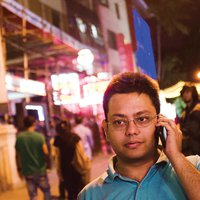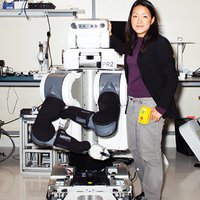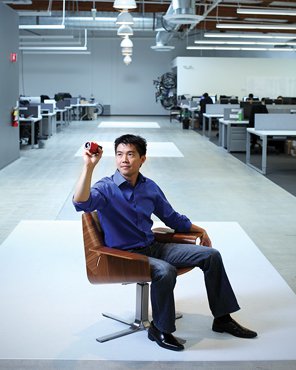Today’s digital cameras do the focusing for you, but they occasionally blow the shot with a blurred subject. That’s never a problem with Ren Ng’s camera. His company, Lytro, sells a $399 model that captures light in a very different way from conventional cameras, recording the angle at which each ray enters the lens. The resulting photo can be sharply focused on any part of the scene, and then refocused on a different part—all long after the picture has been taken. “This is going to drive even larger transformations than the transition from film to digital photography,” says Ng.
Ng’s camera is at the leading edge of the new field of computational photography, which uses software to wring new tricks out of conventional optical components and a few novel ones. Lytro is preparing to release software upgrades that will allow shots taken with one of its cameras to be viewed in 3-D, and it is developing methods that could get professional-quality shots from cameras with cheap lenses, such as those on cell phones.
The focusing trick is an impressive enough start. When a photo taken with the Lytro camera is displayed on a computer, anyone can click on any object in the picture to get the software to instantly bring that object (and anything else in the photo that was the same distance from the camera) into sharp focus, leaving the rest artfully blurred. The focus point can then be changed with a click elsewhere in the photo. Friends can refocus Lytro photos for themselves when they are shared on Facebook or elsewhere online.
Whereas a conventional digital camera captures a focused image as light strikes a sensor chip, the Lytro camera has a plastic sheet of thousands of tiny lenses directly in front of its sensor. These lenses take rays that come into the camera at different angles and direct them to different points on the sensor. That leaves an unfocused image, but it doesn’t matter—because Ng’s software in the camera can use the information about the angle of the light rays to bring any part of the image into sharp focus.
In 2006 Ng was a PhD student at Stanford University studying the illumination of virtual objects. But he wanted to work on something with a more tangible impact, so he put off finishing his degree and started researching ideas for better camera designs. He wasn’t sure how to proceed until one day he found himself staring in frustration at a poorly focused photo he had recently taken. “I thought, ‘Does the camera have to focus before you take the shot?’” he recalls. He had a strong hunch the answer was no, and he immediately set out to prove it.
Once he hit on the idea for his camera system with multiple lenses inside, Ng started tearing apart and rejiggering conventional digital cameras to build prototypes. When he wasn’t screwing together camera parts, he was networking to scrounge up the expertise, technology, and funding he needed. After about nine months, he finally found himself at his kitchen table assembling what he hoped would be his first fully functioning prototype capable of after-the-fact focus. It worked, and became the subject of Ng’s prize-winning PhD thesis.
Ng decided to start a company based on the technology. The easier path would have been to license it to one of the established camera manufacturers, such as Nikon or Canon, rather than trying to take them on. But he feared that a big company would simply try to add the technology to its existing cameras as an incremental improvement. “A transformational technology requires a transformational product,” he says. So he started Lytro, and after four years of stealthy development, the company’s first camera began shipping in February.
Lytro has raised over $50 million in investments. It is currently working on introducing software to expand the capabilities of the existing camera model, with the 3-D upgrade expected this year. A bit further down the road, says Ng, could be cameras that will take refocusable videos.
—Tom Simonite




